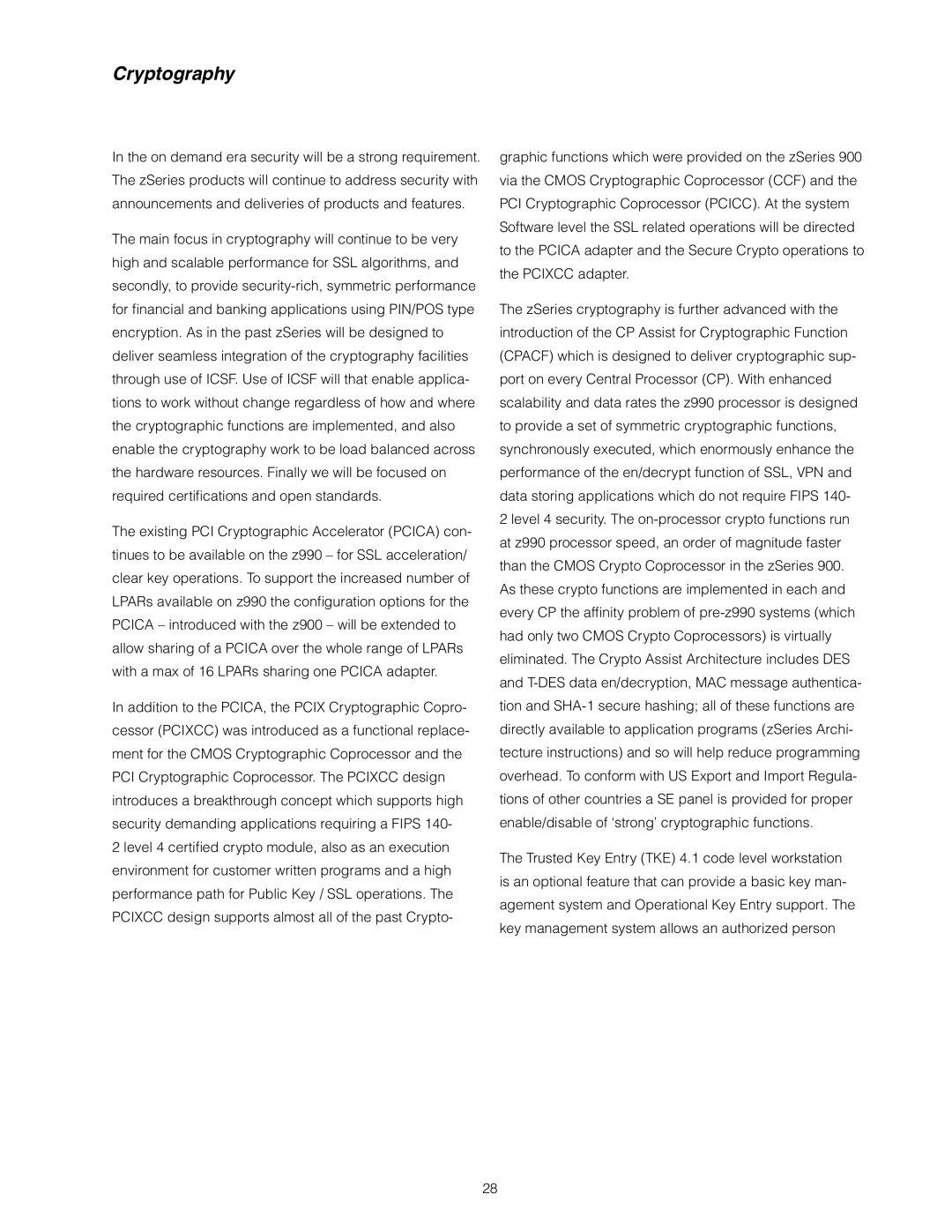Cryptography
In the on demand era security will be a strong requirement. The zSeries products will continue to address security with announcements and deliveries of products and features.
The main focus in cryptography will continue to be very high and scalable performance for SSL algorithms, and secondly, to provide
The existing PCI Cryptographic Accelerator (PCICA) con- tinues to be available on the z990 – for SSL acceleration/ clear key operations. To support the increased number of LPARs available on z990 the confi guration options for the PCICA – introduced with the z900 – will be extended to allow sharing of a PCICA over the whole range of LPARs with a max of 16 LPARs sharing one PCICA adapter.
In addition to the PCICA, the PCIX Cryptographic Copro- cessor (PCIXCC) was introduced as a functional replace- ment for the CMOS Cryptographic Coprocessor and the PCI Cryptographic Coprocessor. The PCIXCC design introduces a breakthrough concept which supports high security demanding applications requiring a FIPS 140- 2 level 4 certifi ed crypto module, also as an execution environment for customer written programs and a high performance path for Public Key / SSL operations. The PCIXCC design supports almost all of the past Crypto-
graphic functions which were provided on the zSeries 900 via the CMOS Cryptographic Coprocessor (CCF) and the PCI Cryptographic Coprocessor (PCICC). At the system Software level the SSL related operations will be directed to the PCICA adapter and the Secure Crypto operations to the PCIXCC adapter.
The zSeries cryptography is further advanced with the introduction of the CP Assist for Cryptographic Function (CPACF) which is designed to deliver cryptographic sup- port on every Central Processor (CP). With enhanced scalability and data rates the z990 processor is designed to provide a set of symmetric cryptographic functions, synchronously executed, which enormously enhance the performance of the en/decrypt function of SSL, VPN and data storing applications which do not require FIPS 140- 2 level 4 security. The
The Trusted Key Entry (TKE) 4.1 code level workstation is an optional feature that can provide a basic key man- agement system and Operational Key Entry support. The key management system allows an authorized person
28
